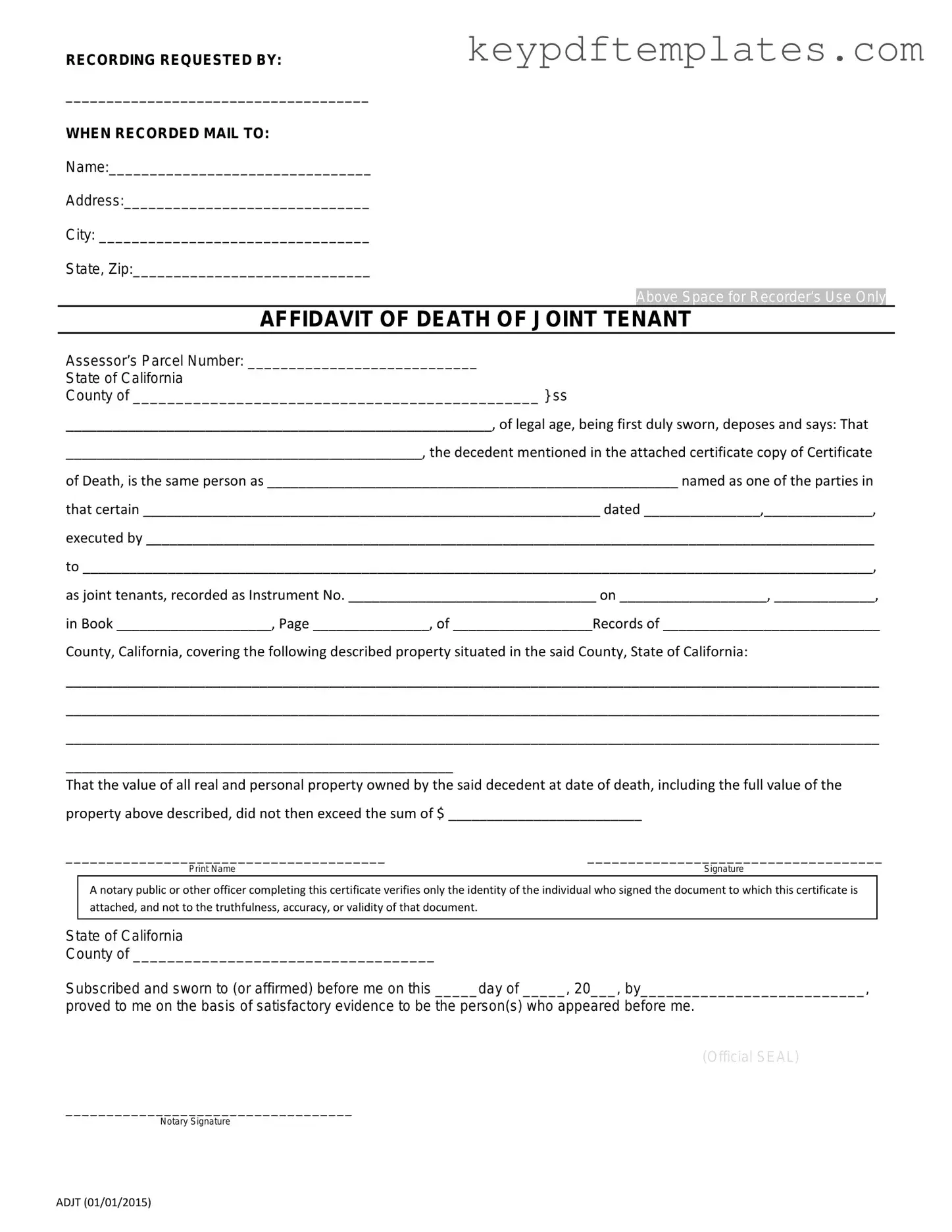Get California Death of a Joint Tenant Affidavit Form
The California Death of a Joint Tenant Affidavit form is a legal document used to establish the death of one joint tenant in a property ownership arrangement. This affidavit serves as proof that the deceased joint tenant's interest in the property has transferred to the surviving joint tenant(s). Understanding this form is essential for ensuring a smooth transition of property rights after a joint tenant's passing.
Modify Document Online
